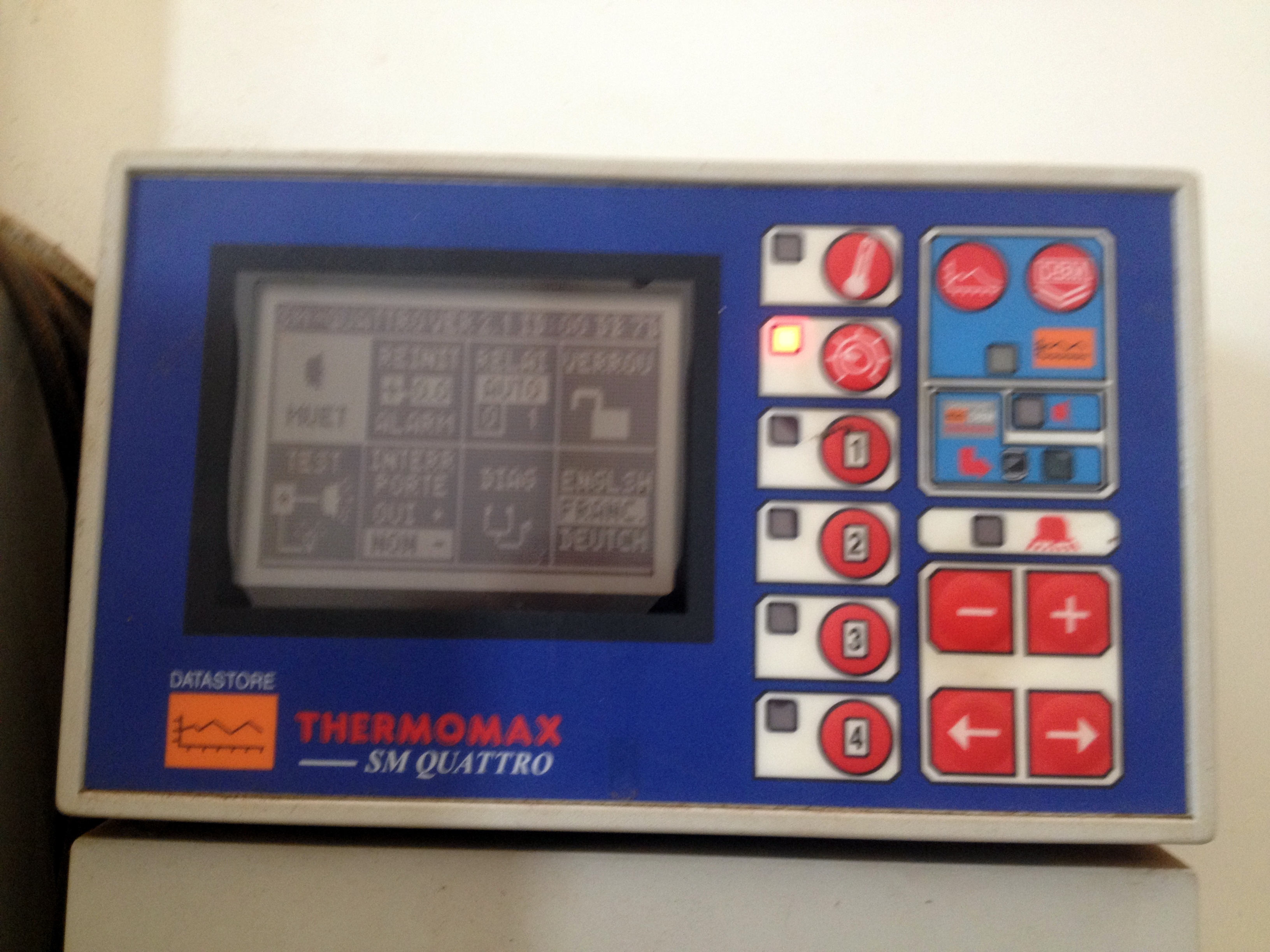This page is about selecting appropriate technology for your cold chain segment.


Photo: training poster from the Laos CCIS project
Photo: SM Quattro temperature monitoring unit
Segmentation can be based on the cold chain level
For health facility level, 30DTR is the recommended product, based on cost and functionality and for national and regional vaccine stores, RTM is the recommended solution.
A tentative segmentation of the temperature monitoring (TM) products to help determine the TM solution most appropriate for each segment of the cold chain by WHO can be found both in the WHO Vaccine Management Handbook, “How to monitor temperatures in the vaccine supply chain” (July 2015), and in the EVM SOP manual in particular EVM-SOP-E2-01. These documents are included in the related resources. However new products are being introduced that were not included in this segmentation and RTMDs are getting cheaper and the value of vaccines even at the lower end of the cold chain is getting higher. Therefore the segmentation of products by levels of the cold chain is not black and white.
Segmentation can also be based on the value of vaccines
It is not easy to define a threshold for the value of vaccines in storage at any facilities before the investment in RTM solutions breaks even but for multiple sensor RTMD, $10.000 is suggested in some studies/tools (the RTMD Costs and Benefits Evaluation Tool from CHAI/PATH, see related resources) as the minimum value of the rotating stock, i.e. typically central, regional and provincial stores.
Segmentation can also be based on the risk to the programme
In a remote location providing vaccines for a large population, the consequences of cold chain failure might result not only in a waste of vaccines but might also jeopardize the entire EPI program if replenishment is delayed. Needs cases can be established based on various assessment or studies such as EVM, GAVI Health Systems Strengthening (HSS) programme and temperature monitoring studies and should include equipment failure rates/equipment failure studies.
Functionality of the different technologies
The table below presents an overview of the different technologies and their functions.| Functions | Stem | 30DTR | 30DTR+SMS | RTMD |
|---|---|---|---|---|
| Read temperature | V | V | V | V |
| Historic recording of temperature |
X (on paper) |
(V) (only 30-60 days) |
(V)
|
V
|
| Reading temperature in real time from a remote location | X | X | X | V |
| Linking with other health information systems, e.g. LMIS, CCE maintenance |
X
|
X
|
(V) (needs design of data interface) |
(V)
|
| Alarming about temperature excursions | X | (V) | (V) | V |
| Ability to direct alarms to accountable parties | X | X | V | V |
| Alarming accountable parties in real time via SMS | X | X | X | V |
X Function not available V Function available (V) Function partially available
Requirements on the environment
Different solutions have different requirements on the environment that must be taken into consideration when deciding on the most appropriate solution.
The table below shows the requirements on the environment for the different solutions| Requirements | Stem | 30DTR | 30DTR+SMS | RTMD |
|---|---|---|---|---|
| Requires SOPs and clarified accountabilities | V | V | V | V |
| Requires setting of alarms and notification rules | X | X | V | V |
| Requires a data visualisation and reporting system | X | X | V | V |
|
Requires investments into infrastructure |
X | X | V | V |
|
|
|||
X Not required V Required
Cost estimate associated with the product implementation
A Temperature Monitoring Cost and Benefit Evaluation Tool (please see related resources below) has been developed by CHAI/PATH to provides estimates of the costs associated with the different products available for continuous temperature monitoring. It can help make the business case for multi sensors RTM, one-sensor RTM versus 30DTR data loggers, or 30DTR + SMS. It summarizes the total cost of devices, ancillary costs (transport etc.), installation and training costs as well as cost of ownership.
When making a cost-benefit analysis, 2 types of costs should be considered:
- Up-front costs: set-up, infrastructure, hardware, installation, training, development of documentation and various communication materials (E.g. SOP).
- Recurring costs: server and data management, cellular fees (SMS), extra staff time, maintenance and technical support as well as periodic training/retraining.
The cost of SMSs depends on the number of alarms sent via SMSs. It is very important that a budget line at the level of the EPI program be established for the recurring costs. The rechargeable batteries of the device have a limited life of up to 2 years for 30DTR devices and 5 years for RTM devices but numerous factors might reduce the battery life significantly (pushing the read button too many times for 30DTR and for RTMDs power cuts counting as a recharge every time power is re-established).
In conclusion we are moving from buying simple devices off the shelf (FridgeTag) to formulating the needs for an all-in product-service system (hardware + site-specific installation + years of data/3G service, data processing software, etc). Integration of a temperature monitoring system into other health metric systems is becoming critical and has implications for MOH decision-making, planning, procurement vis-à-vis their assessment of the strengths/weaknesses & needs of their country systems.
Related resources
| Title | Author | Year | Type | Language |
|---|---|---|---|---|
| How to monitor temperatures in the vaccine supply chain | UNICEF, World Health Organization (WHO) | 2015 | Guidance | English |
| Temperature Monitoring Cost and Benefit Evaluation Tool | CHAI | Tool | English |
